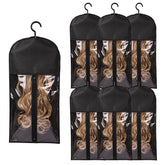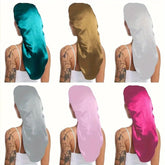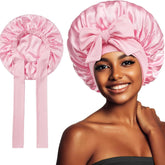Colour melting: the defining hair trend for 2026

Colour melting has emerged as the standout hair colour trend for 2026, replacing stark highlights and traditional balayage with a subtler, blended approach. Rather than creating visible streaks, colour melting softens the transition between tones for a natural, lived-in finish that makes regrowth less noticeable and gives hair a harmonious, multi-dimensional glow.
What is colour melting?
At its simplest, colour melting is a colourist technique that blends different shades so there are no hard lines or obvious demarcations. The goal is a seamless gradient from the root through the mid-lengths to the tips, achieved by feathering, glazing and careful placement of pigment. It can be used on naturally dark hair, lighter bases or even fashion shades — the unifying factor is the smooth transition between colours.
Why it’s gaining momentum in 2026
Several factors explain why colour melting is resonating now:
- Practicality: softer regrowth makes the colour lower-maintenance and salon visits less frequent.
- Natural aesthetics: consumers are seeking subtler, skin tone–complementing hues rather than high-contrast looks.
- Versatility: the technique adapts to different textures, lengths and individual colouring.
- Sustainability trends: fewer touch-ups mean reduced use of chemicals and salon resources over time.
All of this aligns with a broader beauty shift toward longevity, tailor-made results and a more low-intervention routine.
How colour melting is achieved in the salon
Colour melting is less about a fixed formula and more about the colourist’s eye. Typical steps include:
- Consultation: assessing base colour, skin tone and desired intensity to select complementary shades.
- Sectioning and placement: applying darker and lighter shades where they will enhance natural movement.
- Feathering and blending: using brushes, fingers or combs to blur boundaries and create a gradient.
- Glossing or toning: finishing with a glaze to unify the surface sheen and correct undertones.
Because the technique relies on transition rather than contrast, colourists often work with demi-permanent or demi-permanent overlays to achieve a soft finish that fades gracefully.
Who benefits most from colour melting?
Colour melting suits a wide range of clients. It’s particularly well suited to:
- Anyone seeking a natural-looking change without frequent salon maintenance.
- Clients with fine or damaged hair who need softer lightening that doesn’t rely on heavy bleaching.
- People who want multi-tonal depth without obvious striping or banding.
- Those exploring gentle transitions into on-trend shades (bronde, soft copper, cool caramel, ash tones).
That said, the outcome depends on the starting point: deeply contrasted or previously heavily processed hair may require staged services to reach a seamless melt.
Maintenance and at-home care
While colour melting reduces the need for frequent root touch-ups, it still benefits from considered at-home care to preserve tone and shine:
- Use a colour-safe, sulphate-free shampoo and a nourishing conditioner.
- Schedule periodic glossing sessions to refresh tone rather than full recolouring.
- Protect hair from heat and UV exposure to prevent premature fading.
- Incorporate a weekly nourishing mask to maintain hair integrity after lightening or colouring services.
These measures help the graduated tones remain luminous and ensure the hair feels healthy rather than brittle as colour ages.
Considerations before booking
Before you opt for colour melting, keep these points in mind:
- Colourists need time and precision: expect longer salon appointments for a bespoke melt.
- Previous colour history matters: heavily processed hair may need a staged approach for best results.
- Discuss desired maintenance and budget honestly during consultation — lower-maintenance doesn’t always mean lower-cost initially.
Takeaway
Colour melting offers a contemporary alternative to obvious highlights and traditional balayage: a softer, more sustainable way to add depth and warmth without harsh regrowth lines. It fits well with 2026’s trend toward longevity, natural-looking finishes and personalised colour work carried out with sensitivity to hair health.
Explore More: Discover related reads from Hairporium — News • Guides • DIYs • Expert Articles.
Stay Updated: Read more UK hair industry news and innovations on Hairporium News.







